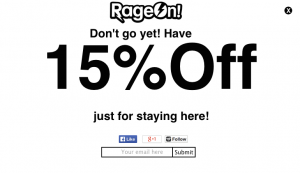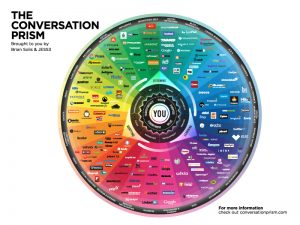Decision making got a whole lot more difficult in the wake of the pandemic, didn’t it? From the most basic choices, like where to shop for groceries or who to visit in-person; to the most complex business decisions, like what to do about employee safety or how to ensure business continuity—suddenly there were more questions to ask, more at stake, and more ways to fail.
Outsourcing your contact center might be one of those decisions. Whether you’re thinking of outsourcing for the first time or on the quest for a new outsourced partner, you might be wondering if right now is even the right time to do it. Or how that decision can be made without on-site visits or in-person meetings.
If those questions sound familiar, read on. We’ll address how the contact center RFP timeline has evolved since COVID turned things upside down.
The Post-COVID Contact Center RFP Timeline
You may be wondering whether right now is the right time to outsource to a new partner. The bottom line is: the more time you allow yourself for an RFP process, the better the outcome is likely to be – so even if you aren’t going to be ready to make the transition for another 12 months, starting the process now gives you a buffer to thoughtfully assess the entirety of your circumstances.
While in pre-COVID times it was possible (though definitely not easy) to condense the RFP timeline down to as little as 45 days (as we lay out in this article), the plain fact is that it usually takes longer than that—especially if you include the time it takes to craft your unique RFP and do the preemptive work to shortlist vendors to invite into the process.
In considering the timeline for your contact center RFP, you also want to build insufficient time for your vendors to provide answers that speak to your unique requirements and program. The best partner will go beyond cut-and-paste answers pulled from an RFP boilerplate response—they will want to ensure they understand your needs first before thoughtfully formulating answers that emphasize their capabilities and strategies in the context of your program structure. Crafting this kind of response takes a collaboration between all their teams—finance, business development, workforce management, and client services—which, of course, takes time.
The other factor impacting post-COVID RFP timelines is the fact that on-site visits to your potential vendors may be a thing of the past – for better or for worse. A study by IdeaWorks (and widely reported on) projects that 19% to 36% of business travel is not coming back for all kinds of reasons ranging from personal risk mitigation to cost-savings. But the big plus of virtual visits is that you can shorten the timeline, as travel is removed from the equation. However, you still want to include time to get to know each vendor, even though this may look very different from the norm (see below for more thoughts on this).
All in all, a comfortable process will take from three to six months from inception to decision, depending on how fast you want to move and what staffing resources you want to dedicate to the process beyond your procurement team. This timeline gives vendors an appropriate number of days and weeks to respond and giving your own team a chance to thoroughly evaluate responses, visit with vendors (either virtually or in person when possible), and discern the partner that fits best.
Making Time to Get to Know Your Vendors in Lieu of a Site Visit
When you’re considering a new partner to be the face of your brand to your customers, you want to get to know them first. Usually, we’re the biggest proponents of site visits you’ll find—even to the point of recommending them before the RFP process—in order to more accurately narrow down the short list. The site visit is the key component to ensuring cultural alignment and effective communication. But in the midst of a pandemic, a little creativity is required.
A live or recorded video tour is a good first step (even if you plan on using remote agents). Getting an idea of their physical workspace provides a window into their culture and how they provide for their in-office teammates. Is the space well-lit with natural lighting and open office space? Is it a comfortable yet professional place to work every day? Getting a sense of how and where they work in physical space will provide a good foundation in getting to know them better.
How about communication with the sales and leadership teams? Where once you might have gone for dinners or had long on-site meetings with them, we’re leveraging Zoom meetings, phone calls, and emails as the primary tools to get a sense of each other. We’ve been involved in a few virtual site visits since March of 2020. The positives: It is easy to involve more stakeholders at your end; there is no cost involved, you can run multiple visits in a day versus travelling between visits. Cons: it is tough to get a sense of culture; it is hard to get a sense of the way the bidder team actually works together (a crucial factor in our experience,) and if you are involving functional area managers and not just the sales folks, some of them may be less experienced presenters whose expertise doesn’t translate well in the virtual environment, making it tough to assess capability when the format gets in the way. Our recommendation is to collaborate with each bidder, allowing them to have some input into how the session is managed and letting them set themselves up for success. After all, you want to see the best of what each bidder brings to the table. That’s more valuable than forcing each bidder to follow a prescribed agenda with no leeway.
Finally, an opportunity to set up video chats with a group of agents can replace in-person roundtables. Having the time to talk freely with frontline agents—especially when a partner allows these conversations to happen without a manager present—tells you a lot about how much they trust their people to communicate the employee experience.
Being able to discern a potential partner’s cultural context in alignment with your own is a critical step in the RFP process. It takes extra time to get these things scheduled, but these opportunities can tell you a lot more about a partner than their RFP response.
The Contact Center RFP Timeline in a Post-COVID World
The pandemic has skewed our sense of time even in our personal lives (remember when we naively thought that stay-at-home orders would only last a few weeks?). The contact center RFP is no exception—especially when you’re unsure about the timing in the midst of uncertainty. Fortunately, the RFP timeline allows you a generous buffer of time to make those decisions carefully at your own pace.
Ready to kickoff your RFP process? Check out our infographic of the top 10 most important RFP questions (including 10 bonus pandemic RFP questions).
Business & Finance Articles on Business 2 Community
(31)







